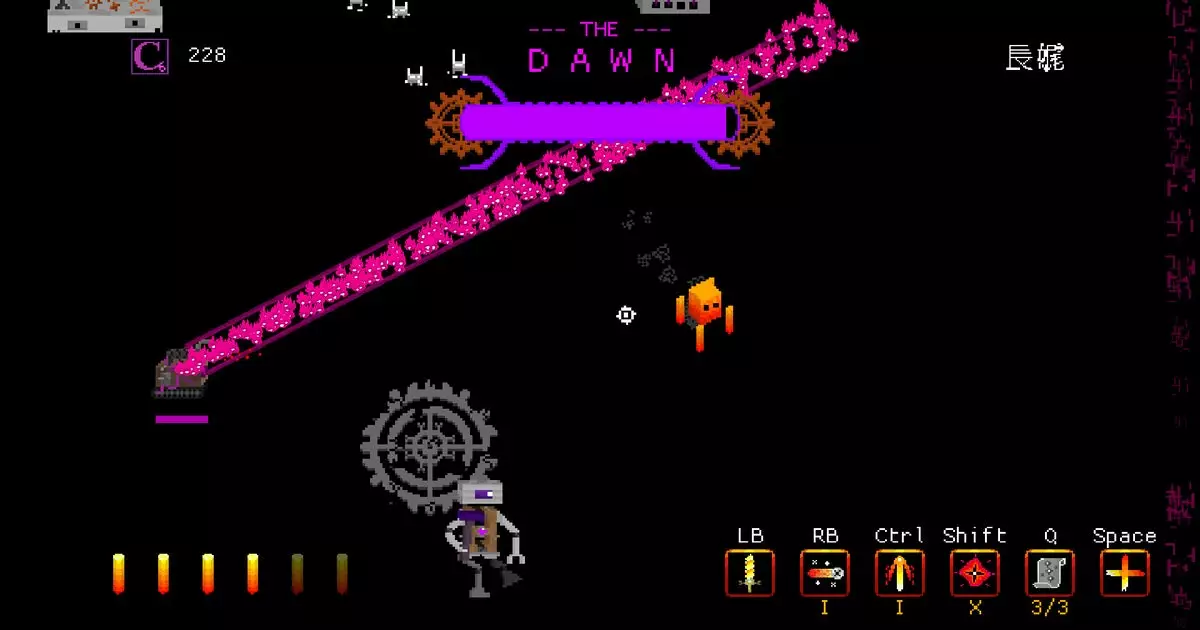In the vast landscape of indie games, there exists a special allure for those that challenge our perception of what a gaming experience can entail. One such title, *Nothing Beyond This Point*, captures this ethos with an innovative twist on the familiar Metroidvania formula. Players plunge into a world where the norms of gameplay are cleverly subverted, evoking a sense of anticipation and wonder reminiscent of childhood fears and uncharted territories. As you navigate this pixel-art universe, the shadows of mystery loom large, beckoning you to step further into the unknown.
At its core, *Nothing Beyond This Point* serves as an homage to a lot of retro classics, building upon the foundations laid by predecessors yet daring to expand into darker, more abstract territory. Its environmental design is meticulous, creating spaces that feel both structured and chaotic. Much like the enigmatic worlds of yore, where every corner and crevice could hide a revelation—or a terror—this game encourages exploration with its intricate layout of 16 distinct areas. Each room holds secrets waiting to be unveiled, thriving on the player’s instincts to push further.
Power Dynamics and Resource Management
What truly sets *Nothing Beyond This Point* apart is its unique mechanics rooted in the tension of survival and resource management. Central to the gameplay is the concept of floating rods—crucial to your character’s immortality. Damage depletes these rods, introducing an intensity to combat rarely seen in the genre. The decision to regenerate them involves a risk: locking yourself in place, vulnerable to incoming attacks for those agonizing moments. This creates a pulse-pounding dynamic where every encounter feels like a high-stakes dance of strategy.
This approach fundamentally redefines the conventional Metroidvania experience. Instead of mindlessly hacking away at foes, players must now observe, plan, and react in the moment. The stakes are raised not merely by aggressive enemies—crawling horrors and sniper ghosts—but by the ever-looming threat of resource depletion. Here, enemy design plays a critical role in reinforcing these mechanics, each adversary challenging players to leverage their innate abilities while defining their combat rhythm.
A Narrative Shrouded in Mystery
Beyond the mechanics, one cannot overlook the atmospheric storytelling that *Nothing Beyond This Point* masterfully weaves into its gameplay. The references to the occult, the almost Lovecraftian whispers that tantalize your senses, and the palpable sense of dread from disembodied voices add layers to the experience. Unlike many titles which spoon-feed their narrative, this game opts for an enigmatic approach, inviting players to piece together the storyline from environment and context.
Encounters with the ethereal, such as tuning into garbled whispers alluding to an ancient obelisk, evoke a visceral sense of discovery, harking back to the thrill of discovering secrets within games. Such experiences encourage an inquisitive mindset that can be all too rare today, often overshadowed by more direct narrative styles. Through its immersive atmosphere, the game provides a canvas for the player’s imagination to thrive, teetering on the border between relief and apprehension.
Confronting Antiquity and Innovation
Games like *Nothing Beyond This Point* illustrate an intricate balancing act between nostalgia and innovation. As players encounter traditional genre tropes—like campfires serving as save points—the game flips expectations, using these familiar elements as mere facades for deeper mechanics. It emphasizes the uncanny, instilling a false sense of security before swiftly shattering it. This is where the game shines, pushing players beyond comfort into the maelstrom of uncertainty.
The clever integration of doodling minigames to manipulate the environment only further enhances this reclamation of agency, aligning with the game’s overarching thematic narrative. The discovery of hidden sigils and gods acknowledges the layers of gameplay that beckon exploration beyond mere combat—allowing players to shape their own journey.
As anticipation builds for the full game, one can’t help but wonder what lies ahead: Are there more haunting adversaries waiting in the wings, or perhaps even deeper philosophical revelations regarding the nature of existence within its beautifully warped reality? The question itself reinforces the essence of gaming exploration—sometimes it’s not about finding all the answers but reveling in the mysteries that invite us to keep playing.

